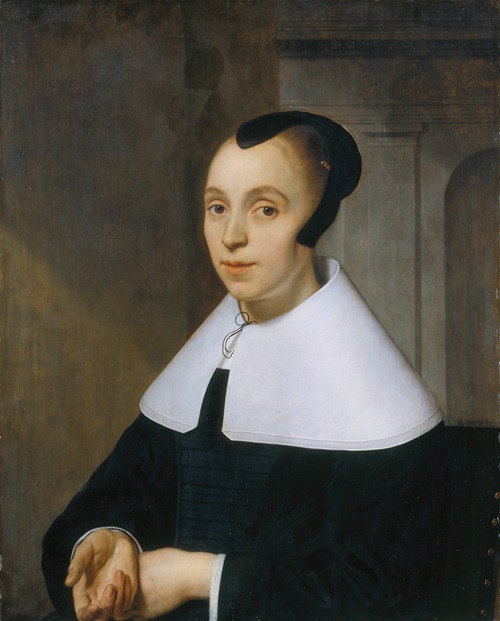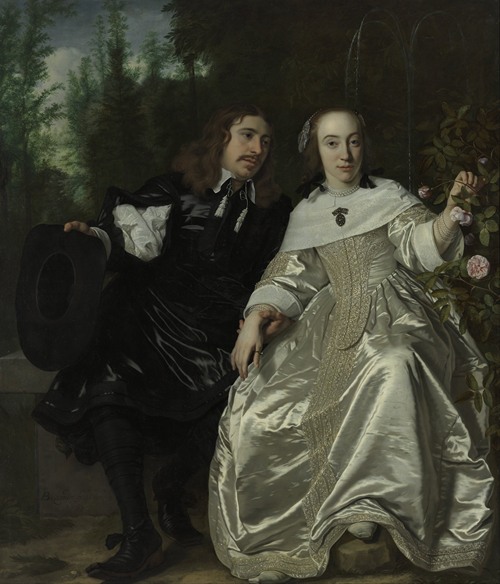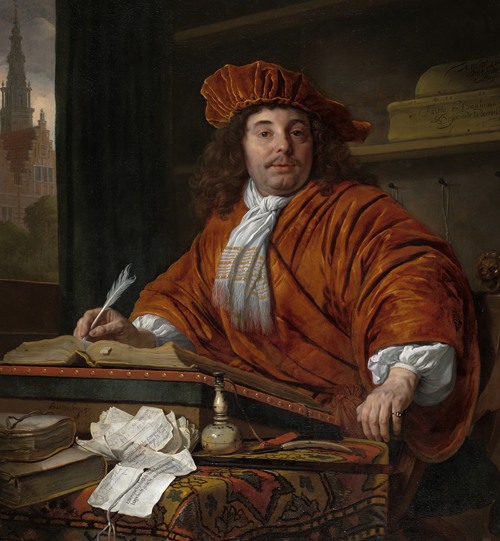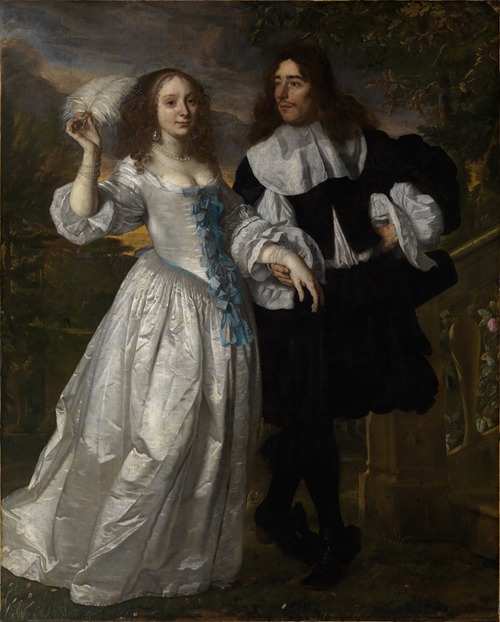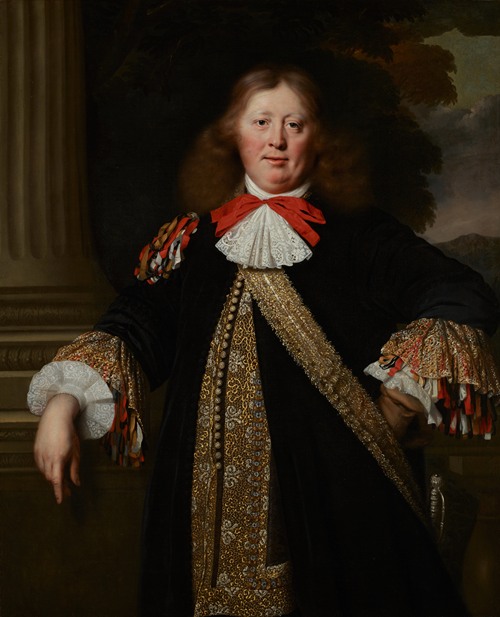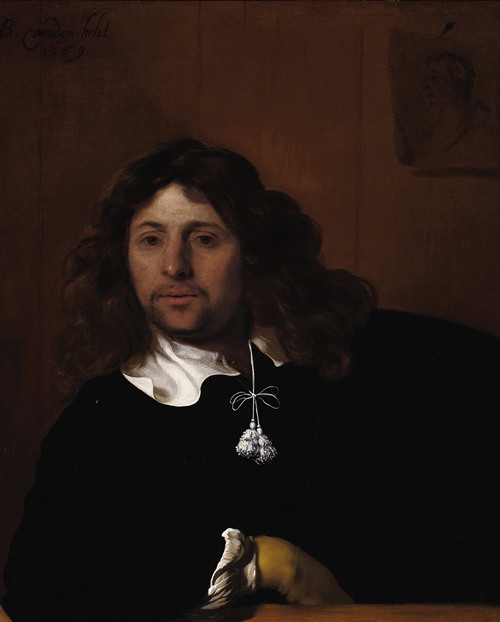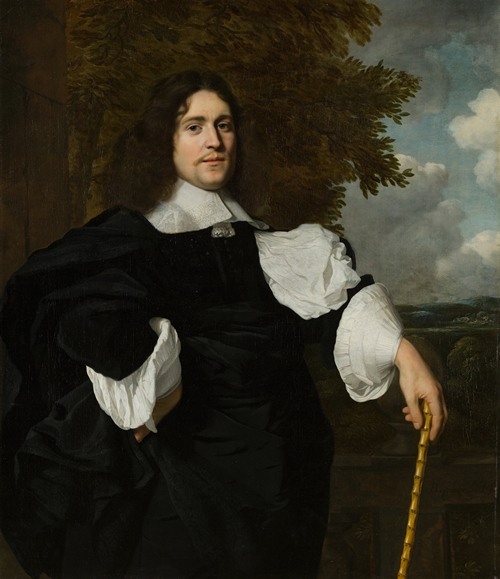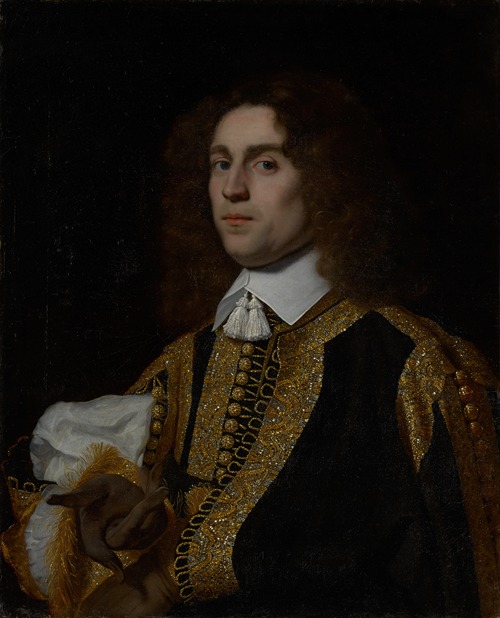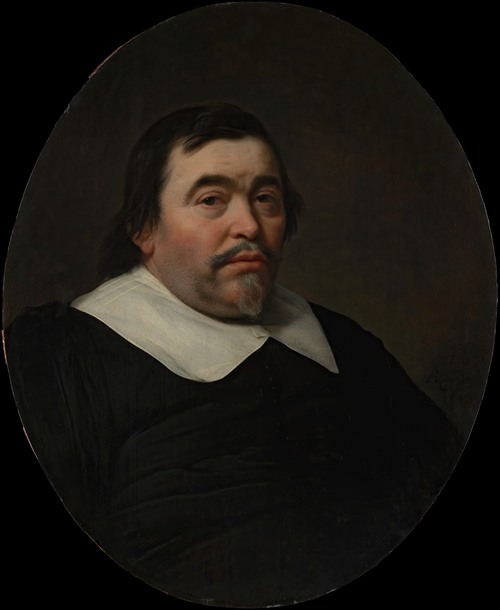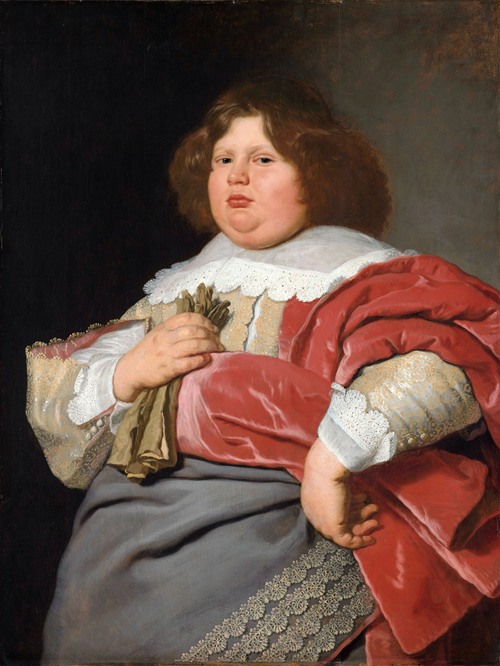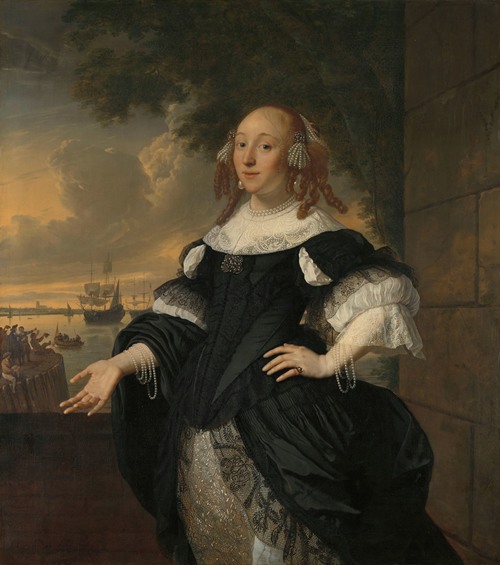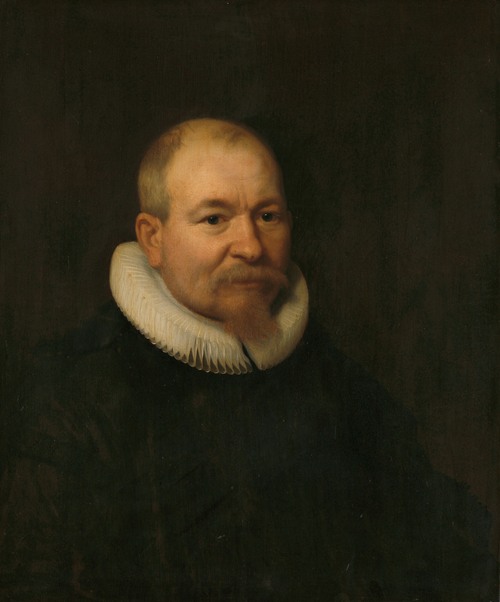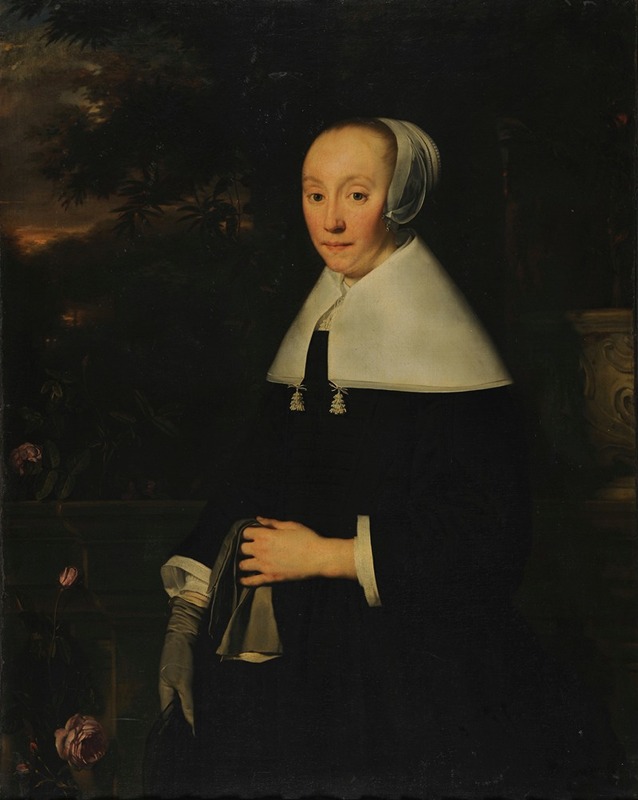
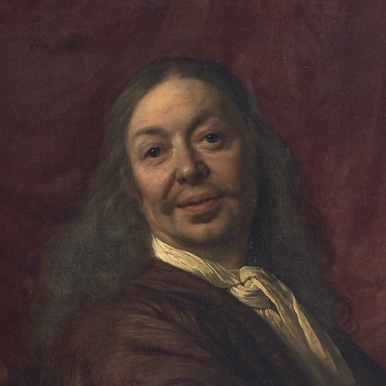
Bartholomeus van der Helst was a Dutch painter. Considered to be one of the leading portrait painters of the Dutch Golden Age, his elegant portraits gained him the patronage of Amsterdam's elite as well as the Stadtholder's circle. Besides portraits, van der Helst painted a few genre pictures as well as some biblical scenes and mythological subjects.
Bartholomeus van der Helst was born in Haarlem in 1613. His exact date of birth is not known as the birth records of Haarlem of that time are lost. He was the son of a Haarlem innkeeper called Lodewijk and Lodewijk's second wife, Aeltgen Bartels. Van der Helst had moved to Amsterdam some time before 1636, the year in which he married there Anna du Pire, an 18-year-old woman from a prosperous family of the Southern Netherlands who was already orphaned. The couple had six children of whom one, called Lodewijk (1642 - c. 1684), became a portrait painter like his father.
His first dated picture, the Regents of the Walloon Orphanage in Amsterdam, dates from 1637. The style of this painting suggests that in Amsterdam van der Helst may have trained with Nicolaes Eliaszoon Pickenoy. His first important commission was for a large schuttersstuk known as the Civic Guard led by Captain Roelof Bicker and Lieutenant Jan Michielsz. Blaeuw. Van der Helst received the commission in 1639 and finished it in 1642. The large 7.5m wide canvas was hung over the fireplace of the grand assembly of the Kloveniers guild, the same room for which Rembrandt painted The Night Watch. The success, which the artist achieved with this composition, led to many commissions for single and double portraits of Amsterdam's leading class such as his Portrait of Andries Bicker, the mayor of Amsterdam. The city's military brass and wealthy members of the regent class all had portraits made by van der Helst.
Even though van der Helst was active in Amsterdam at the same time as Rembrandt, he was able to become the most popular portraitist in that city, through his elegant and flattering portrayals in the style of Anthony van Dyck. His work was considered more immediately appealing than the dark, intense and introspective work during this later period of Rembrandt. Rare among portrait artists in Amsterdam of his time, he was able to attract bourgeois patrons from other cities such as Rotterdam.
His large group portrait, Banquet of the Amsterdam Civic Guard in Celebration of the Peace of Münster (Rijksmuseum, Amsterdam), was painted in 1648, and exhibited to popular acclaim. It was this painting that sealed his fame for future generations, according to the Dutch artist biographer Arnold Houbraken. The painting was admired by Godfried Kneller and Joshua Reynolds. Van der Helst received a commission from the circle of the Stadtholder family, when he was asked in 1652 to paint the portrait of Mary, the widow of William II, Prince of Orange.
The artist remained active throughout his life and maintained a high level of production until the end of his career. His late works such as the pendant portraits of Lieutenant-Admiral Aert van Nes and his wife Geertruida den Dubbeld and Vice-Admiral Johan de Liefde (all three dated 1668 and in the Rijksmuseum) still set the trend in portrait painting in his age. The harbour scenes in the background in these three works were painted by Ludolf Bakhuizen.
He was the teacher of his son Lodewijk who followed his style. Marcus Waltes was his pupil in 1650. He had no other known pupils but exerted an influence on Govert Flinck, Eustache Lesueur, Constantin Hansen, Alexander Sanders and Abraham van den Tempel.
Van der Helst died in Amsterdam in 1670. While he had been able to charge very high prices for his works, he appears to have lived above his means. He had bought a large house and acquired many paintings of leading artists such as Frans Floris, Simon de Vos, Goltzius, Adriaen Brouwer, Pieter Lastman, Gerard van Zyl, Simon de Vlieger, Hendrik Gerritsz Pot, Otto Marcelis, and Willem van de Velde. After his death his wife was compelled to offer his works and those from his art collection for sale in 1671 in an advertisement in the Haarlems Dagblad.


